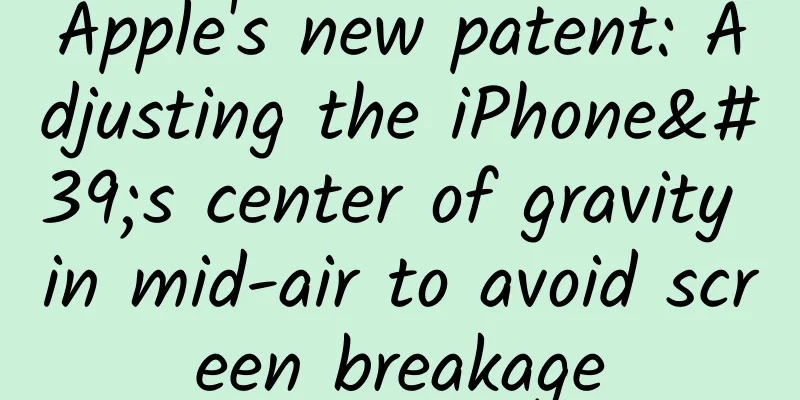Apple's new patent: Adjusting the iPhone's center of gravity in mid-air to avoid screen breakage

|
This week, Apple was awarded a new patent by the U.S. Patent and Trademark Office called "Electronic Device Protection Mechanism". This mechanism can detect when an iPhone has been dropped, and then use a vibration motor to adjust the center of gravity of the phone to ensure that the screen is facing up when the phone hits the ground. According to the patent description, this mechanism will use the iPhone's processing power, accelerometer and gyroscope to identify the phone's drop event, and then calculate the descent speed, impact time and rotation speed in a split second, and then use the vibration motor to adjust the phone's center of gravity and rotation state to ensure that the phone's screen is facing up when it falls to the ground. Although the iPhone 6 and iPhone 6 Plus do not have this type of vibration motor, all previous iPhones have it, and the patent states that the motor is powerful enough to do the job, and also describes how to speed up the motor in the event of a fall.
Apple has previously experimented with other ways to protect its phones from drops. For example, a patent obtained in 2013 uses compressed air to spray out when the phone falls to the ground to cushion the impact (like those return-to-the-ground aircraft). Another way is to increase drag and reduce the impact by retracting the wings and popping out the aerodynamic surface. Apple's patent also mentions recycling buttons and switches when falling to avoid damage. Of course, the above is just Apple's idea. It will probably take a long time to become a reality, and it is not certain that Apple will put it into practice in the future. In contrast, it seems more feasible in the near future to reduce the cost of high-strength screens (such as sapphire screens) or to develop more drop-resistant screens (for example, Corning claims that the fourth-generation diamond glass can reduce the breakage rate of the screen to 20% when dropped to the ground). Link to this article: http://www.36kr.com/p/217479.html |
<<: What else can you offer to attract developers besides high salaries and beautiful girls?
>>: Ten Years of Litigation: iPod DRM, Jobs, and 8 Million Users
Recommend
How much does it cost to attract investment in the Xuchang Homestay Mini Program? What is the investment price for Xuchang B&B Mini Program?
Is it easy to attract investment for Xuchang Home...
Summer "grilling" experience: Uncovering the "secrets" of the sun, the "master of the universe grilling"
In the hot summer, the sun is blazing in the sky,...
Taihang Mountains are so beautiful!
Tai means big Walker, shape Taihang Mountains It ...
Tesla to develop an App store to compete with iOS and Android
Tesla may be developing its own app store to allo...
AMD Pro A12 Carrizo power consumption reduced to 12W
AMD Pro A12 "Carrizo" APU mobile platfo...
Will myopia get worse after adulthood? If you don't correct these points, you may develop severe myopia
Reviewer of this article: Xu Qibin, associate chi...
Juniper Research: Research shows that highly intelligent robots are more popular with consumers
According to data from Juniper Research, a Britis...
Review the feature upgrades and innovations of each generation of iPhone
Preface Since Apple released the first iPhone in ...
A complete and effective event planning plan!
Event planning refers to the planning of differen...
You will know the high-quality Baidu promotion account structure after reading this article...
Baidu search keyword bidding is a very common pro...
What are the functions of the Home Chef Door-to-Door Service Mini Program app? How much does the Home Chef Door-to-Door Service Mini Program cost?
With the improvement of economic level, people ha...
Third-party libraries are not required in the project
Preface During my eight years at Lyft, many produ...
If you want to learn Android, you might as well listen to how engineers are trained
Interested in Android but don't know how to g...
Three groups of people in Beijing must undergo comprehensive nucleic acid testing! Which three groups of people are you referring to? Attached is the latest epidemic situation!
In order to further improve epidemic prevention a...
China Center for Disease Control and Prevention: From 1990 to 2019, the mortality rate of Chinese residents due to excessive intake of sugary drinks increased by 35%
Do you usually drink milk tea or other beverages?...









